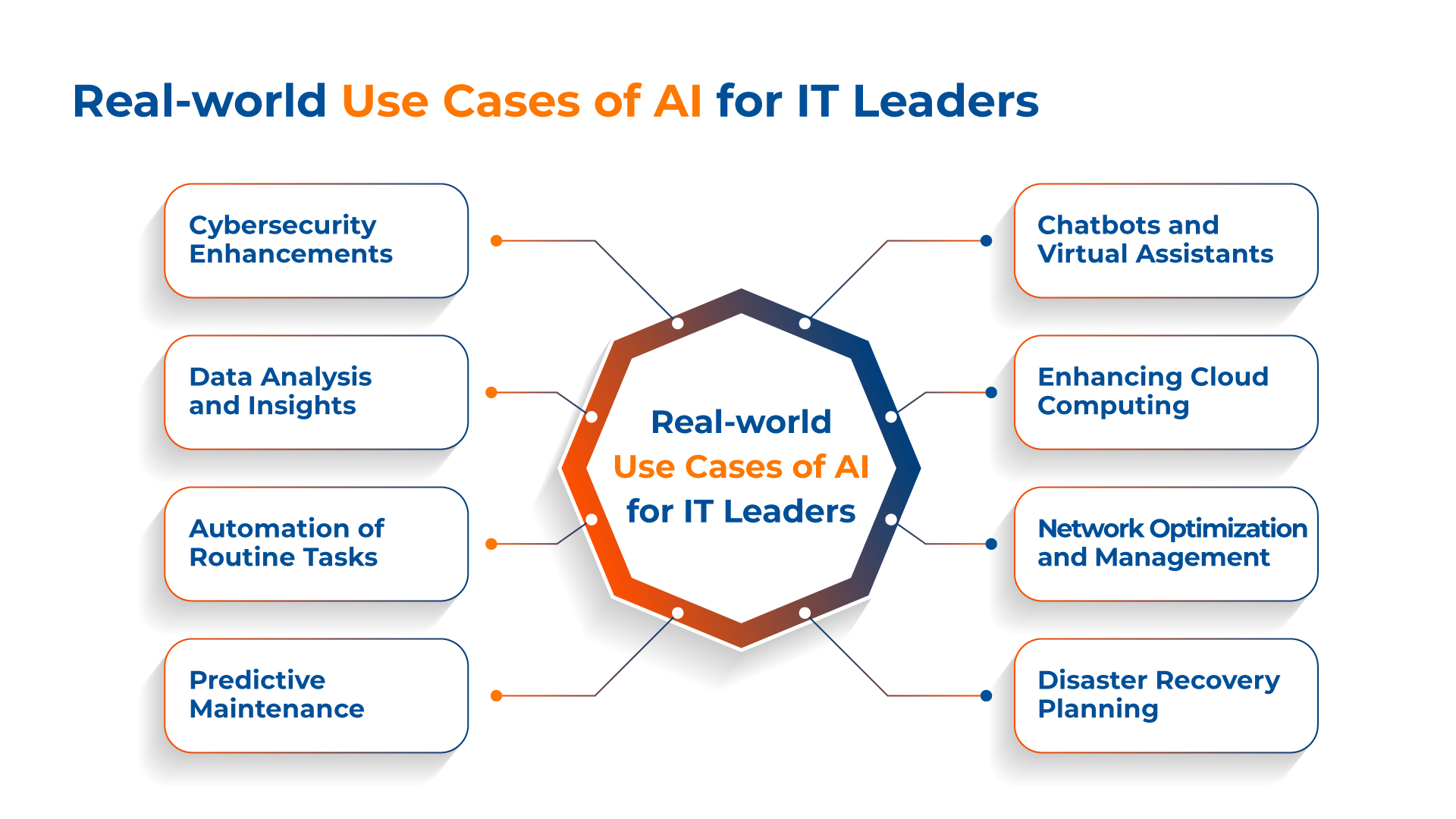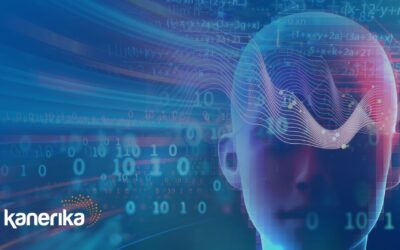Artificial Intelligence (AI), Machine Learning (ML), Neural Networks, and Deep Learning are buzzwords commonly heard in the realm of enterprise IT and often used interchangeably. Yet, these terms are not synonymous, and understanding their distinctions is crucial. This IT leaders’ guide to tech can help you understand these technologies.
AI is the umbrella term for machines programmed to mimic human intelligence, performing tasks such as problem-solving, recognition, and language understanding. ML, a subset of AI, involves algorithms that enable machines to improve tasks through experience. Deep learning, a more specialized subset of ML, involves neural networks with many layers, allowing machines to make sophisticated decisions by analyzing large data sets. Broadly, a neural network is a computer system modeled after the human brain, designed to recognize patterns and learn from data.
These differences are significant, especially in practical applications and technology development. Acknowledging these distinctions is essential for businesses to leverage each technology’s capabilities effectively and for consumers to understand the technology behind their products.
Table of Contents
- Artificial Intelligence: The Grand Umbrella
- Machine Learning: AI’s Subfield
- Deep Learning: Diving Deeper into ML
- Neural Networks: The Backbone of Deep Learning
- Measuring Success: Key Performance Indicators (KPIs)
- Future Outlook: Trends and Emerging Technologies to Watch
- AI Adoption Blueprint for IT Leaders
- Kanerika: Your Trusted Technology Partner
- FAQs
Artificial Intelligence: The Grand Umbrella
Defining AI and its Organizational Benefits
Artificial Intelligence, or AI, represents a remarkable frontier in modern technology.
AI enables machines to think, learn, and adapt in ways that echo human intelligence. At its core, AI involves creating algorithms and systems that can analyze complex data, make decisions, and solve problems with a degree of autonomy.
This technology spans a variety of applications, from the voice assistants in our smartphones to sophisticated data analysis tools in various industries. AI is reshaping how we interact with technology, offering more intuitive, efficient, and responsive solutions to our needs. Its continual evolution promises to unlock even more potential, making it a pivotal element in current and future technological landscapes.
Categories of AI and Their Implications for IT Leaders
To make informed decisions, it’s essential to understand AI’s multiple categories:
1. Artificial Narrow Intelligence (ANI):
Also known as “weak AI,” ANI specializes in doing one specific task well. For IT leaders, ANI can be a low-risk entry point into AI, offering specialized solutions without the complexities of more advanced systems.
An example of ANI- Deep Blue, a chess-playing expert system run on a unique purpose-built IBM supercomputer.
2. Artificial General Intelligence (AGI):
AGI is designed to understand, learn, and apply knowledge across various tasks, much like a human. While AGI is still a theoretical concept, it represents the future of AI and could revolutionize every industry. IT leaders should keep an eye on AGI advancements for long-term strategic planning.
3. Artificial Super Intelligence (ASI):
This theoretical stage of AI proposes machines that would not just equal but surpass human intelligence. Though ASI is not yet realized and remains a subject of ongoing debate and research, it represents the ultimate level of AI capability. ASI is more of a theoretical concern for IT leaders at this point, but it highlights the critical need for ethical and safety measures in AI deployment.

Machine Learning: AI’s Subfield
Understanding ML and Its Strategic Importance
Machine Learning (ML) serves as a specialized AI subfield committed to enabling systems to learn from data rather than rely on explicit programming. In the context of business technology strategy, ML isn’t just a tech initiative but a broader strategic asset that can drive real business value. IT leaders can use ML to make better decisions through data analytics, personalize customer experiences, and optimize operational efficiencies.
Variants of ML and Considerations for IT Leaders
Different ML methods can address various business problems:
1. Supervised Learning:
With labeled datasets, algorithms learn a relationship between input and output. For IT leaders, this is useful for predictive analytics and customer segmentation.
2. Unsupervised Learning
The algorithm uncovers hidden patterns in data without labeled responses. Applications include customer behavior analysis and anomaly detection, which are essential for IT security.
3. Reinforcement Learning
Algorithms learn by trial and error, guided by rewards or penalties. This can be used in optimizing logistics, routing, or stock trading algorithms.

AI/ML Implementation Case Study
Let’s talk about a recent AI/ML implementation effort for a global healthcare provider led by our team at Kanerika.

The Brief
As healthcare workforce optimization specialists in a rapidly evolving healthcare industry, the client encountered several challenges impeding business growth and operational efficiency. Manual SOPs caused talent shortlisting delays, while document verification errors impacted service quality. Dependence on operations jeopardized scalability amid rising healthcare workforce demands.
Challenges
- Manual SOPs used by the operations team delayed the shortlisting of highly skilled talent, impacting business growth
- Manual document verification led to errors and inconsistencies, compromising quality & customer satisfaction
- Heavy reliance on the operations team hindered scalability, impeding the company’s ability to meet customer demands
Solution
- Implemented AI applications in healthcare and ML algorithms for accurate document verification, streamlining operations, and improving efficiency
- AI implementation helped reduce the operations team from 500 to 320 members, optimizing resources and enhancing scalability
- Automated AI-based onboarding process for new professionals, increasing productivity and streamlining business support processes
Deep Learning: Diving Deeper into ML
What Makes Deep Learning Unique
Deep Learning, a more specialized subset of ML, harnesses the power of neural networks with multiple layers to extract features from data automatically. For IT leaders, Deep Learning offers powerful tools for tackling complex problems that traditional ML might not be equipped to solve, such as image recognition, natural language processing, and complex pattern recognition.
Key Characteristics of Deep Learning
Feature Extraction:
Deep Learning automatically identifies essential features in the data, reducing the need for human intervention and potential bias. This is crucial for applications like automated medical diagnosis, where precision is critical.
Data Dependency:
Deep Learning requires large datasets to train effectively. Deep Learning can provide unparalleled insights for organizations with access to big data.

Neural Networks: The Backbone of Deep Learning
What Are Neural Networks?
Neural Networks serve as the core architecture for Deep Learning. Understanding this technology can give IT leaders insights into how complex data-driven tasks can be performed more efficiently and accurately.
Types of Layers in Neural Networks
1. Input Layer:
The foundational layer that receives data. It sets the stage for the type and scope of problems the neural network can solve.
2. Hidden Layers:
These intermediate layers transform the data using weights that are refined during the learning process. Their architecture can significantly affect model performance.
3. Output Layer:
This layer delivers the final output, be it a classification or another data interpretation type. Properly configuring this layer is crucial for achieving specific objectives.

Measuring Success: Key Performance Indicators (KPIs)
Importance of KPIs
For IT leaders, implementing any form of technology, be it AI, ML, Neural Network, or Deep Learning, is not the end of the journey. Measuring the success of these implementations is crucial for justifying investments and planning future expansions. That’s where Key Performance Indicators come into play.
Common KPIs
- Accuracy: The most straightforward metric, indicating how often the model makes a correct prediction.
- Precision: Measures the quality of the prediction. For instance, precision would indicate how many flagged transactions were actual frauds in a fraud detection model.
- Speed: This gauges how quickly the model can make a prediction or reach a decision, which is crucial for applications requiring real-time analysis.
- Cost Savings: Quantifiable benefits accrued by automating tasks previously performed by humans.
Custom KPIs: Tailoring Metrics to Organizational Needs
It’s not uncommon for organizations to develop their own KPIs that align with unique business objectives or industry requirements. IT leaders should define these custom KPIs proactively to capture the full range of benefits their AI initiatives bring.
Future Outlook: Trends and Emerging Technologies to Watch
Future-ready is crucial for IT leaders who want to maintain a competitive edge. Below are some pivotal trends and emerging technologies in the realm of AI:
Quantum Computing
Traditional computers use bits for computational tasks, which exist in a state of either 0 or 1. In contrast, quantum computers use quantum bits or qubits, which can exist in multiple states simultaneously. This quantum superposition enables quantum computers to perform complex calculations at speeds unattainable by current computing technology. For AI, this means exponentially faster data processing and analytics, enabling real-time insights that could revolutionize sectors like finance and healthcare.
Natural Language Understanding (NLU)
While natural language processing has been around for some time, natural language understanding aims to grasp the semantics, sentiment, and context behind human language. Implementing NLU can result in highly intuitive AI systems that offer better user experiences in chatbots, automated customer service, and even in analytics platforms that can interpret human emotions.
Autonomous Systems
We’ve gone beyond self-driving cars; autonomous systems now include drones, robotics, and even smart cities that can operate with minimal human intervention. These technologies offer vast applications, from agricultural automation to advanced healthcare. In supply chain management, for example, drones and automated vehicles could carry out tasks around the clock, optimizing timelines and cutting costs.
Human-AI Collaboration
Future trends indicate a more seamless integration between humans and AI, where machine learning models can predict human behavior and vice versa. This symbiotic relationship can improve decision-making in complex environments like financial markets or emergency response coordination.
For IT leaders, these emerging technologies present opportunities and challenges. Each will require a robust infrastructure, specialized skill sets, and a comprehensive understanding of their implications on current business models. This is where this IT leaders’ guide to tech can come in handy.
AI Adoption Blueprint for IT Leaders

This blueprint outlines a sequenced action map designed to effectively guide IT leaders through the adoption and integration of AI technologies.
Step 1: Assess Infrastructure Readiness
- Action: Conduct an infrastructure audit focusing on hardware and software capabilities
- Outcome: A report detailing the upgrades or investments needed for AI adoption
Step 2: Assemble a Cross-Functional Team
- Action: Identify and onboard experts from different departments (Tech, Marketing, Operations, HR, Legal)
- Outcome: A multi-disciplinary team focused on aligning AI with business objectives
Step 3: Define Regulatory Landscape
- Action: Map out local and international laws concerning data and AI
- Outcome: A compliance checklist for AI implementation
Step 4: Identify Trusted Partners
- Action: Research and select external agencies with proven AI expertise
- Outcome: Partnering with a trustworthy agency, such as Kanerika, for specialized support
Step 5: Initiate Skills Development
- Action: Plan and commence training programs in machine learning, data science, etc
- Outcome: A workforce skilled in the essentials of AI and machine learning
Step 6: Conduct Pilot Tests
- Action: Choose a small-scale project for initial AI implementation
- Outcome: Valuable insights into the technology’s practical utility, potential roadblocks, and ROI
Step 7: Regular Compliance Audits
- Action: Schedule regular audits to ensure ongoing compliance with regulatory standards
- Outcome: Maintained ethical and legal integrity in AI applications
Step 8: Full-Scale Implementation
- Action: Roll out the AI technologies across the organization based on insights from the pilot tests
- Outcome: Seamless integration of AI into business processes, providing a competitive edge
Kanerika: Your Trusted Technology Partner
In the journey to harness the transformative powers of AI, ML, DL, and NNs, choosing a knowledgeable and reliable technology partner like Kanerika becomes a pivotal decision. This choice stands as the difference between a successful implementation that aligns with your strategic objectives and potentially expensive missteps. With a focus on quick deployment, innovation, and tailored solutions, Kanerika’s domain expertise and proven track record make it the go-to partner for organizations committed to leveraging AI and ML technologies to their fullest potential.
Why Choose Kanerika?
- Proven Track Record: Years of successful implementations and satisfied clients attest to Kanerika’s ability to deliver. Their proven track record provides the assurance that your project is in capable hands.
- Guided Strategy: The complexity of AI and ML technologies demands a nuanced approach. Kanerika helps you navigate these intricacies with a well-crafted, step-by-step strategy tailored to your organizational objectives.
- Domain Expertise: With a deep understanding of various industries and business processes, Kanerika brings invaluable domain expertise to the table, which translates into more effective and context-sensitive solutions.
- Purpose-Built Solutions: Kanerika excels at crafting solutions that are not just technologically sound but also laser-focused on solving your specific business challenges, thereby ensuring that every project delivers substantive value.
- Quick Deployment: In a market where agility often defines success, Kanerika specializes in rapid deployment. This speed to market can become a competitive advantage, allowing your organization to realize ROI more swiftly.
- Focus on Innovation: Standing still is not an option in today’s rapidly evolving tech landscape. Kanerika has a commitment to innovation, continually researching and integrating the latest technologies and methodologies to ensure your solutions remain cutting-edge.
- Customer Obsession: Kanerika operates with a steadfast commitment to customer satisfaction, emphasizing a collaborative approach to ensure that the solutions deployed are in perfect alignment with your needs and expectations.













